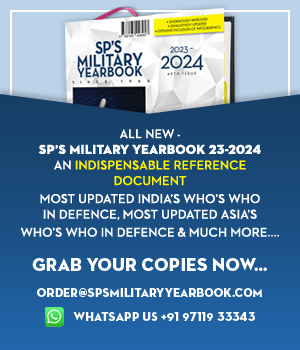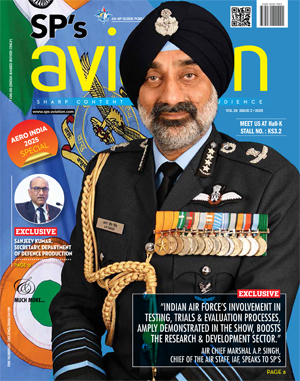INDIAN ARMED FORCES CHIEFS ON OUR RELENTLESS AND FOCUSED PUBLISHING EFFORTS
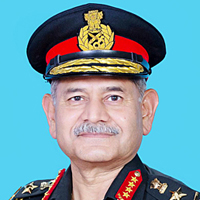
The insightful articles, inspiring narrations and analytical perspectives presented by the Editorial Team, establish an alluring connect with the reader. My compliments and best wishes to SP Guide Publications.
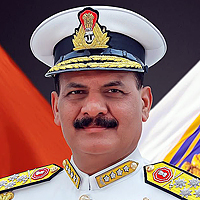
"Over the past 60 years, the growth of SP Guide Publications has mirrored the rising stature of Indian Navy. Its well-researched and informative magazines on Defence and Aerospace sector have served to shape an educated opinion of our military personnel, policy makers and the public alike. I wish SP's Publication team continued success, fair winds and following seas in all future endeavour!"

Since, its inception in 1964, SP Guide Publications has consistently demonstrated commitment to high-quality journalism in the aerospace and defence sectors, earning a well-deserved reputation as Asia's largest media house in this domain. I wish SP Guide Publications continued success in its pursuit of excellence.
Infrastructure - A Welcome Step
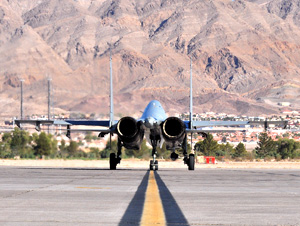
The order to a private entity for modernisation of airfield infrastructure is a step in the right direction that will give an opening to the private industry to make inroads into the large defence contracts
The recent order placed by the Indian Air Force (IAF) for modernisation of airfield infrastructure (MAFI) has come at the appropriate time. This exercise has been in the making for the past eight years or so. It has been given to a private entity, which is a step in the right direction that will give an opening to the private industry to make inroads into the large defence contracts. It is hoped that the IAF has kept the following in mind while awarding this contract:
- Competition: There are numerous airfields under the IAF control, some under the control of the Navy and a few with the Army. The other two services need to learn from the initial steps that the private player incorporates, so that the learning process is not repeated. It is however important to have more than one vendor to prevent single vendor monopoly, and as this will ensure lower cost and better service, though standardisation of the equipment could become a problem.
- Divergence in requirements: Each airfield will have its individual identity, be it in the plains, hilly and mountainous terrain, island territories and desert areas. Each type of aircraft requires its own type of airfield and runway approach aids; for example the MiG-21 aircraft which still have some years to go, will require ground beacons to indicate the bearing of the aircraft, whereas the Mirage 2000 needs a different one, which indicates the bearing and distance. An airfield like Leh will require a curved approach to land, similar to ones in the mountainous valleys in the Northeast, whereas the ones in the Kashmir valley, Srinagar, require a straight in approach after safely entering the valley. Each type of aircraft is bounded by its technological limitations. However, there will be a number of common equipment, like radars, R/T sets, runway lighting, etc, which will enable use of common sets of equipment, while the divergent aspects need to be incorporated, where necessary.
- Bad weather and night operations: The IAF operates in regions affected by different conditions of humidity, altitude, etc; like moist conditions in the Northeast, dry in the desert regions of Western India, the mountainous regions of Northern and Northeastern India, runway length constraints, as in the Brahmaputra valley, and even in the Andaman and Nicobar islands. Each of these terrain, demands a different set of airfield and runway approach aids.
- Runway surface and lighting: Due to high altitude, airfields like Srinagar, Leh and similar ones, need to be longer than the ones in the plains, whereas the ones in the Islands will be restricted due to space restrictions. Runway lighting extends the operations of an airfield into the night, and especially in bad weather, where the runway lights enable a pilot to approach the airfield in poor visibility or low cloud conditions, to align the aircraft with the runway for safe landing. Considering that weather in India restricts flying to perhaps 30-60 days, during the monsoon and winter season, there needs to be a calibrated approach to equip IAF airfields with Category I, II or III ground equipment.
- Common approach between military and civil aviation: Both civil airfields and IAF airfields, need to have a common approach towards the purchase of airfield infrastructure, especially so, as the entire country needs to have a common equipment to build up to the NextGen Air Traffic Management standards, which includes airfield aids and even vehicles such as crash and rescue vehicles, runway cleaning vehicles, ambulances, etc, so that large orders of common equipment can be translated to lower rates, to the benefit of both organisations.




